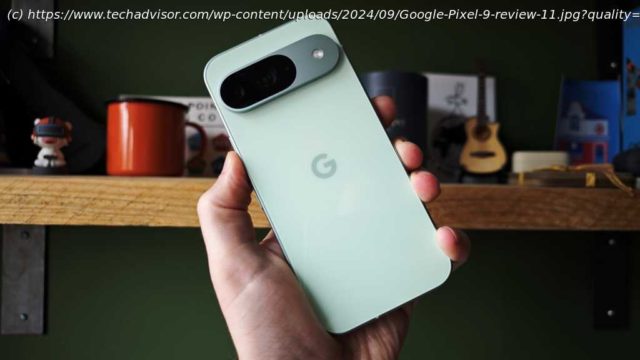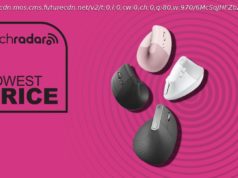I’ve been living with the regular Pixel 9 as my daily driver for a month, and this year, things have changed from the usual Pixel pattern
Google’s 2024 flagship phone range is now on sale, and I’ve been using the cheapest Pixel 9 handset for over a month.
With all the new AI features, including Gemini, and the unusual clash of IFA, it’s taken longer than normal to fully test the phone. So, is the entry-level Pixel 9 the best phone for you? Can it outpace the iPhone and Galaxy S24?
Another price rise, making the phone £799/$799, means it doesn’t have the luxury of undercutting big-name rivals. And Google has even implemented a design overhaul that makes the Pixel 9 more like its fruit-themed rival than ever before.
It’s a solid phone once again, but whether you should buy it comes down to whether you want to spend this much money on a flagship which has AI as its headline draw. Design & Build
Overhauled with iPhone styling
More premium finish and build
Four colours to choose from
Let’s start with the design. Although I’ve been a fan of Pixel phone designs since the start, I’m a bit torn this year.
Google has always ensured that Pixel handsets have had a distinct character, from the two-tone backs of early generations to the divisive camera bar introduced with the Pixel 6.
I’ve always liked Google’s overall aesthetic of pebble-like shapes and generally nice colours, but the Pixel 9 series has had something of an overhaul in a different direction.
Build quality certainly feels better than ever but Google has, to put it simply, gone iPhone with the design this year.
The flat sides and rounded corners are straight out of the Apple design book. Apart from subtle details like button placement and the glossy rear cover, it’s the camera bump that would be the only big giveaway if you handed me the Pixel 9 and iPhone 15 blindfolded.
It’s not that Google has done anything overtly wrong here, but it’s a shame to lose most of the Pixel personality and conform to trends instead. I prefer the old camera bar design that blended into the sides and the new polished back (Gorilla Glass Victus 2 like the front) is one of the most slippery I’ve ever used.
Google supplied me with an official silicone case and it’s necessary to stop the phone wandering off by itself or sliding out of your hand while waiting for your train to arrive. Oddly though, after a month of use one corner almost always needs popping back into place when I take the phone out of my pocket.
It’s a shame, as ever, to cover the phone up. Particularly as I love the Wintergreen colour of my review sample. The phone is also available in Porcelain (off-white), Obsidian (black) and Peony (pink) if you’d prefer.
Although the phone is slimmer than the Pixel 8 at 8.5mm, it’s heavier at 198g. It’s verging on too heavy, but I’ve found it ok to handle. The phone, as usual, is IP68 dust and water resistant.
Haptic feedback is good although noticeably different from rival phones. I’d say it’s perfectly good most of the time but is a little tight which can get annoying when gaming.
When it comes to eco-credentials, the aluminium in the Pixel 9’s housing is 100% recycled. Overall, it’s made with 20% recycled materials (based on weight) and the packaging is completely plastic-free. Screen & Speakers
6.3-inch, 120Hz Actua display
Bigger and brighter than Pixel 8
Ultrasonic in-display fingerprint scanner
The first thing to talk about with regards to display is the new Actua screen itself. It’s a lot brighter than before – peaking at 2,700 nits – so I’ve found it easier to use outside than previous generations. I measured it at an impressive 943 nits, which is way higher than most phones on the market.
The display is a tiny bit bigger than last year at 6.3 inches and the thinner bezel makes the Pixel 9 look more premium, too.
It still lacks LTPO tech in order to drop the refresh rate down to 1Hz which would help the battery life (more on that later). It’s tech that’s understandably reserved for the Pro models, but I do miss it.
At this point it’s worth noting that the 9 Pro has the same screen size, providing the rare option for a compact(ish) Pro phone. Your other option is the Pixel 9 Pro XL, but that has a 6.7-inch screen.
Still, the display is flagship level in almost every way, with its punchy OLED colour and contrast, crisp resolution and 120Hz refresh rate (something that’s still limited to the Pro models of the iPhone 16 range).
Gladly, Google has finally swapped from an optical fingerprint scanner to an ultrasonic one and performance is much better on this front. Google’s version of Face ID works well, too, and it’s secure enough to be used to authenticate payments and log into banking apps.
There’s no headphone jack, as usual, but the dual stereo speakers do a solid job of playing music or otherwise when you need them. Of course, you can easily connect a pair of headphones or a speaker via Bluetooth.Specs & Performance
Google Tensor G4 chipset
Upgraded RAM
Two storage capacities
You could argue that Google has always been a little bit behind on core hardware with the Pixel phones, though not in any major way.
This year, of course, you get Google’s latest Tensor G4 chipset, which in a month of usage has been running the phone perfectly smoothly. There’s also a big 50% bump to the memory, so you get 12GB as standard now (the Pro models get 16GB).
For storage, you can choose from 128- or 256GB and with no Micro-SD card, think about it wisely.






